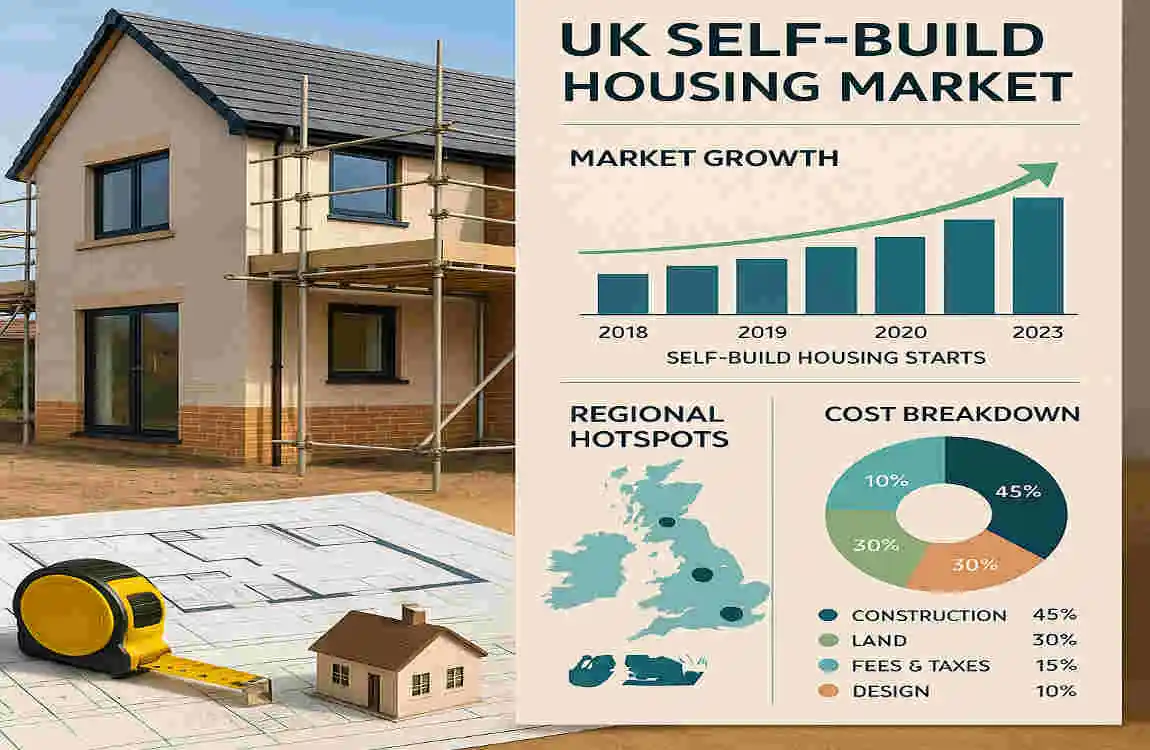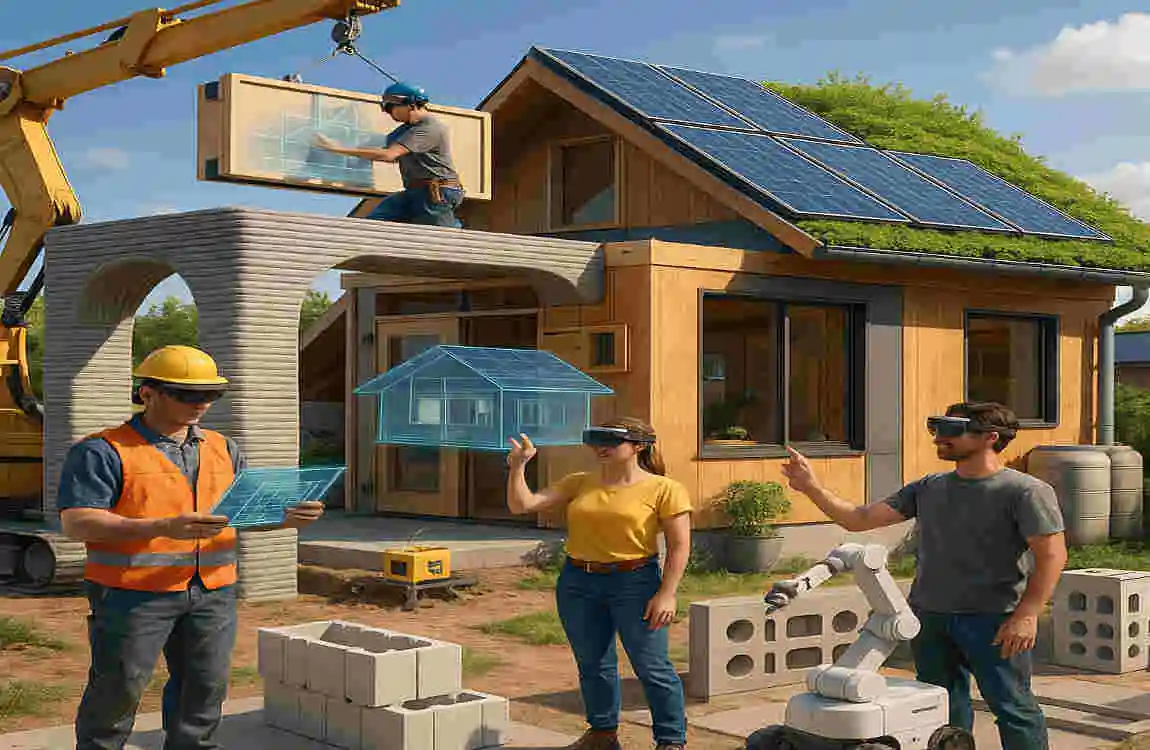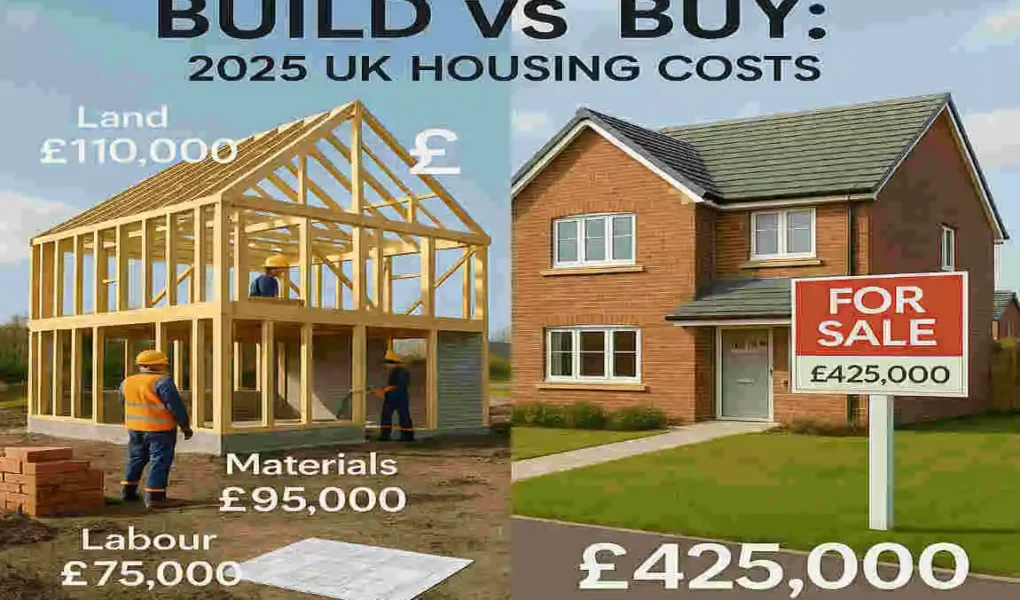Have you ever wondered, “Is it cheaper to build your own house in the UK?” With housing prices soaring and the dream of owning a bespoke home becoming more desirable, many people are turning to self-building as an alternative. Whether it’s to save money, create a home tailored to your needs, or embrace a more sustainable lifestyle, self-building is increasingly popular.
However, embarking on a self-build project requires thorough research. Understanding the costs, savings, benefits, and challenges is essential before jumping into this adventure.
Understanding the Self-Build Housing Market in the UK

The UK housing market has undergone significant changes over the years, and self-building is no longer a niche concept. Here’s why self-building is gaining traction across the country.
Growth of Self-Build Homes in Recent Years
Over the past decade, self-built homes have grown in popularity, with many individuals seeing them as a way to escape the rising costs of traditional housing. According to recent statistics, the UK sees around 12,000 self-build homes completed annually, and this number is expected to rise in 2025.
The Self-Build and Custom Housebuilding Act (also known as the Right to Build) has made it easier for individuals to access plots and resources to start their projects. Local councils are required to keep a register of people interested in self-building and help them find suitable plots.
Government Incentives and Policies
The UK government has recognized the potential of self-building to address housing shortages. Policies such as tax reliefs on construction materials and grants for sustainable homes are encouraging more people to take up self-building. Additionally, schemes like Help to Build provide financial support to aspiring self-builders by offering loans for construction costs.
Types of Self-Build Projects
Self-building covers a range of project types, including:
- Custom Builds: You work with developers or contractors to build a home tailored to your design preferences.
- Kit Homes: Pre-designed homes with prefabricated components that are easy to assemble on-site.
- DIY Projects: For those willing to take a hands-on approach, managing or even constructing the house themselves.
Why Build Instead of Buy?
People are drawn to self-building for several reasons:
- Cost Control: You can decide where to save and where to splurge.
- Customization: Build a home that fits your lifestyle and preferences.
- Sustainability: Incorporating eco-friendly materials and energy-efficient designs can reduce environmental impact.
- Investment: A well-built self-build project can appreciate faster than a standard home.
Key Costs Involved in Building Your Own House
Building your own home may sound exciting, but it’s essential to break down the key costs to understand what you’re getting into. Let’s explore them in detail.
Land Acquisition Costs
Land is the foundation of any self-build project, but it doesn’t come cheap. The cost of land varies significantly across the UK, depending on the location, size, and accessibility. For example:
Region Average Land Cost (per acre)
South East England £400,000 – £700,000
Midlands £150,000 – £300,000
Northern England £50,000 – £150,000
Scotland/Wales £30,000 – £100,000
In addition to purchasing the plot, you’ll need to account for legal fees, surveys, and planning permission applications, which can add another £5,000 to £15,000 to your costs.
Planning Permission and Building Regulations
Securing planning permission is a crucial step, and it doesn’t come for free. Planning fees in the UK typically range from £200 to £500, but hiring a planning consultant may cost an additional £1,000 to £3,000.
Once you have planning permission, you’ll need to adhere to building regulations to ensure safety and quality standards. You may also require inspections, which could cost £1,000 to £2,000 throughout the project.
Construction Costs
Construction costs make up the bulk of your budget. On average, building a home in the UK costs around £1,500 to £2,500 per square meter, depending on materials and finishes.
Labor vs. Self-Build Savings
- Hiring professionals can be expensive, with labor costs ranging from £150 to £250 per day for builders.
- Opting for a self-build approach (doing some of the work yourself) can save thousands, but it requires time, skills, and dedication.
Material Costs in 2025
The price of construction materials has risen in recent years due to supply chain challenges. Here’s a breakdown of popular material costs in 2025:
- Bricks: £500 – £600 per 1,000 bricks
- Timber: £30 – £50 per square meter
- Concrete: £90 – £120 per cubic meter
Professional Fees
Hiring professionals like architects, surveyors, and structural engineers is often necessary. On average:
- Architect fees: 5-15% of the total project cost
- Surveyor fees: £500 – £1,000
- Structural engineer fees: £750 – £2,000
Utility Connections and Infrastructure
Connecting utilities like water, electricity, and gas can cost £5,000 to £15,000, depending on the location of your plot.
Contingency and Unexpected Expenses
It’s essential to set aside a 10-15% contingency fund for unexpected costs, such as delays, material shortages, or design changes.
Savings Opportunities When You Build Your Own House
While the costs can add up, there are several ways to save money during your self-build project.
DIY Labor and Project Management
Taking on some tasks yourself, like painting or tiling, can save thousands. Additionally, managing the project yourself instead of hiring a contractor can cut costs by 10-20%.
Cost-Effective Materials and Methods
Opting for recycled materials or prefabricated components can significantly reduce expenses. Modular homes, for instance, are growing in popularity due to their affordability and quick assembly.
Energy Efficiency and Long-Term Savings
Building an energy-efficient home may cost more upfront, but you’ll save on utility bills in the long run. Features like solar panels, insulation, and heat pumps can lower energy consumption and reduce costs.
Tax Reliefs and Incentives
In 2025, self-builders in the UK can benefit from VAT exemptions on construction materials and grants for sustainable building practices.
Trends in DIY Homebuilding and Innovations in 2025

The self-build industry is evolving rapidly. Here are some top trends shaping the market in 2025.
Prefabricated and Modular Homes
Prefabricated homes are becoming increasingly popular due to their affordability and construction speed. These homes can be assembled in a matter of weeks, saving time and labor costs.
Advanced Technology
Innovations like 3D printing, smart home systems, and sustainable materials are revolutionizing self-building. For example, 3D-printed walls can cut construction time by 50%.
DIY Communities and Support
The rise of online forums and local self-build communities is helping individuals share resources, tips, and advice, making the process more accessible.
Case Studies and Real-Life Examples
Sarah’s Modular Home in Kent
- Cost: £220,000
- Savings: Used prefabricated components, reducing labor by 30%.
- Lesson Learned: Invest in a good project manager to stay on track.
Case Study 2: Tom’s Eco-Friendly Cottage in Wales
- Cost: £180,000
- Savings: Installed solar panels and insulation, reducing long-term energy bills.
- Lesson Learned: Budget extra for unforeseen expenses.
Step-by-Step Guide to Building Your Own House in the UK
- Find and Buy Land: Research affordable plots and secure planning permission.
- Design Your Home: Work with an architect or use pre-designed plans.
- Hire Professionals: Decide which tasks to DIY and which require experts.
- Manage Construction: Stay organized and stick to your budget.
- Final Inspections: Ensure your home meets all regulations before moving in.




